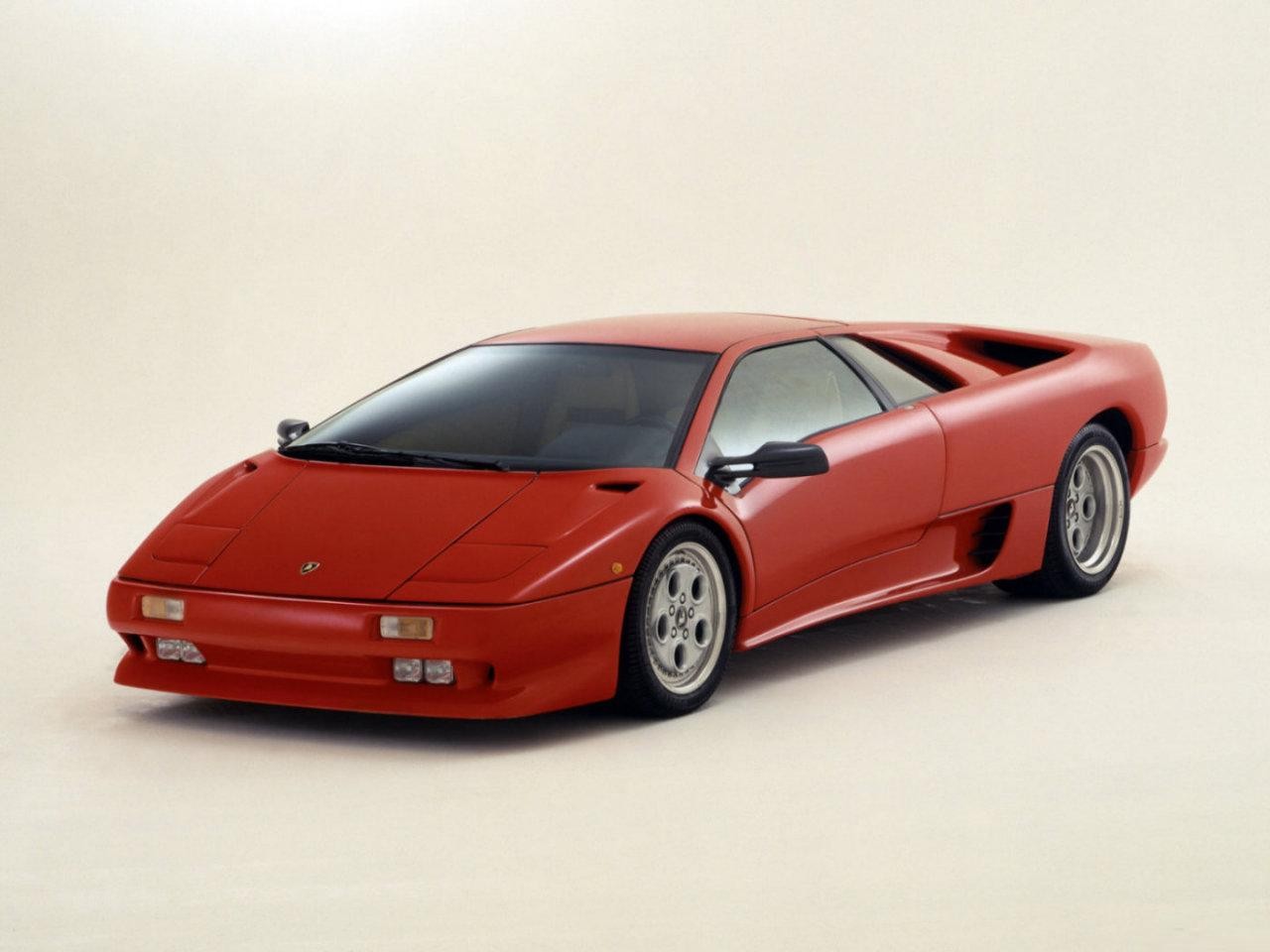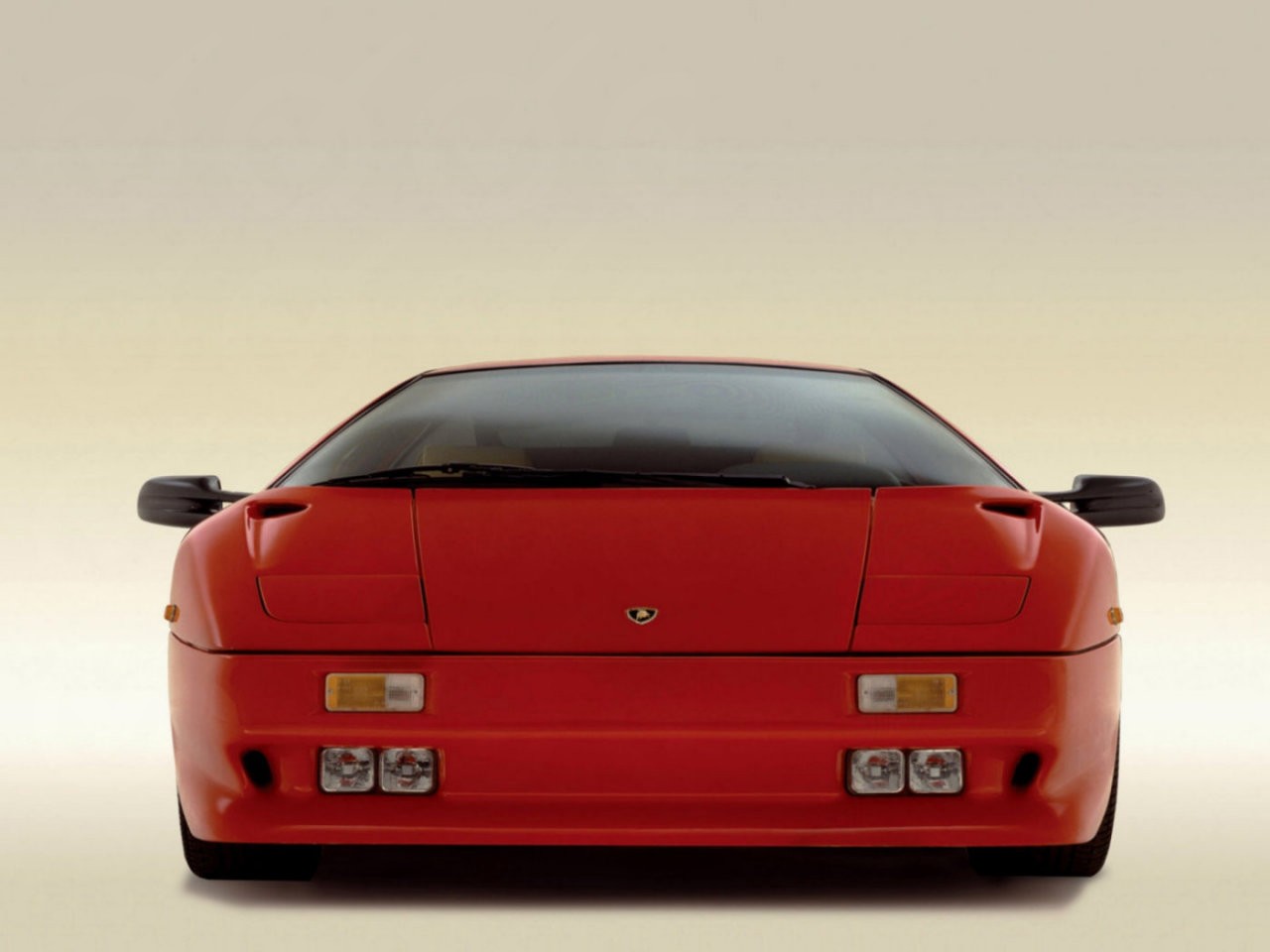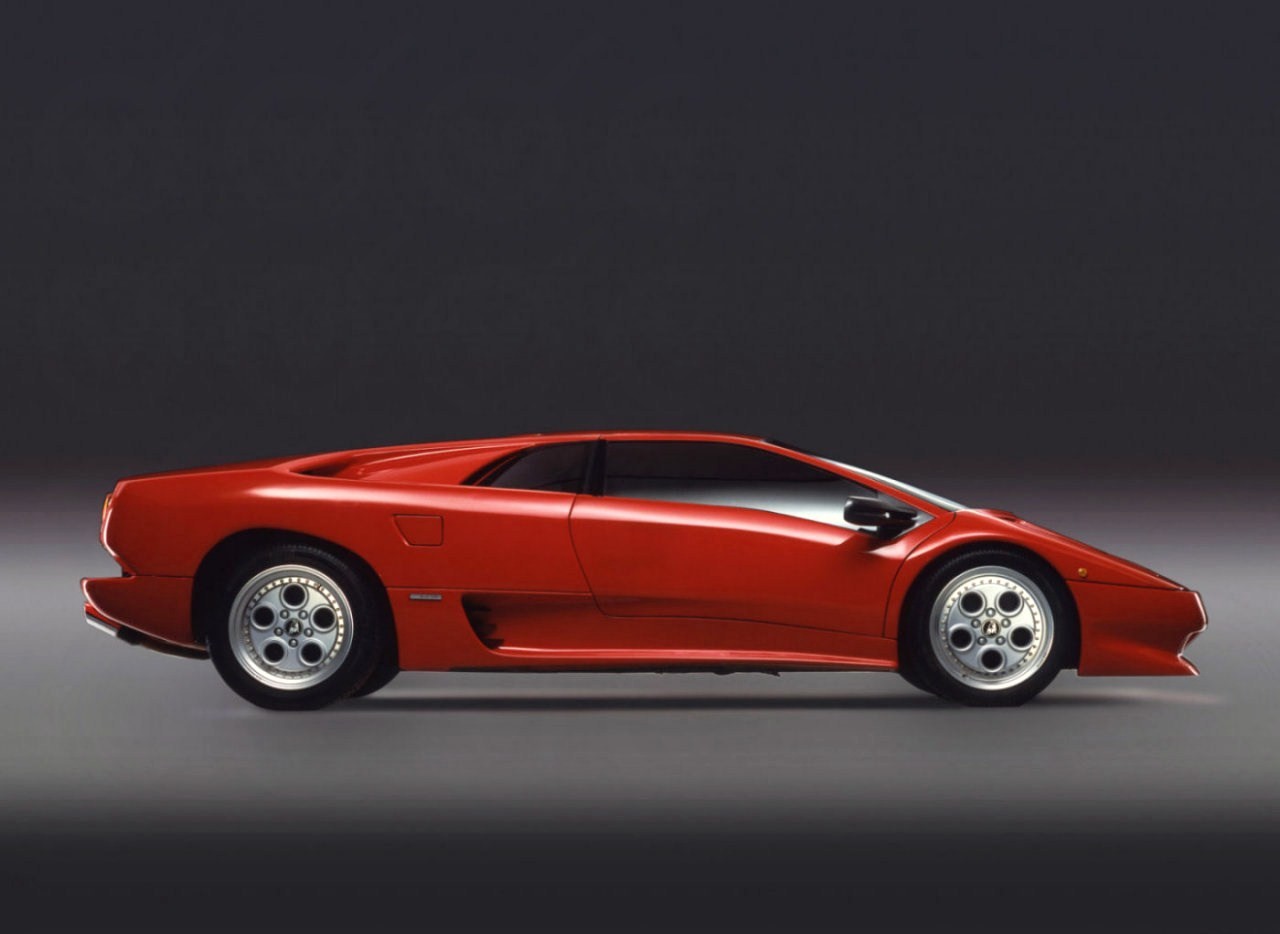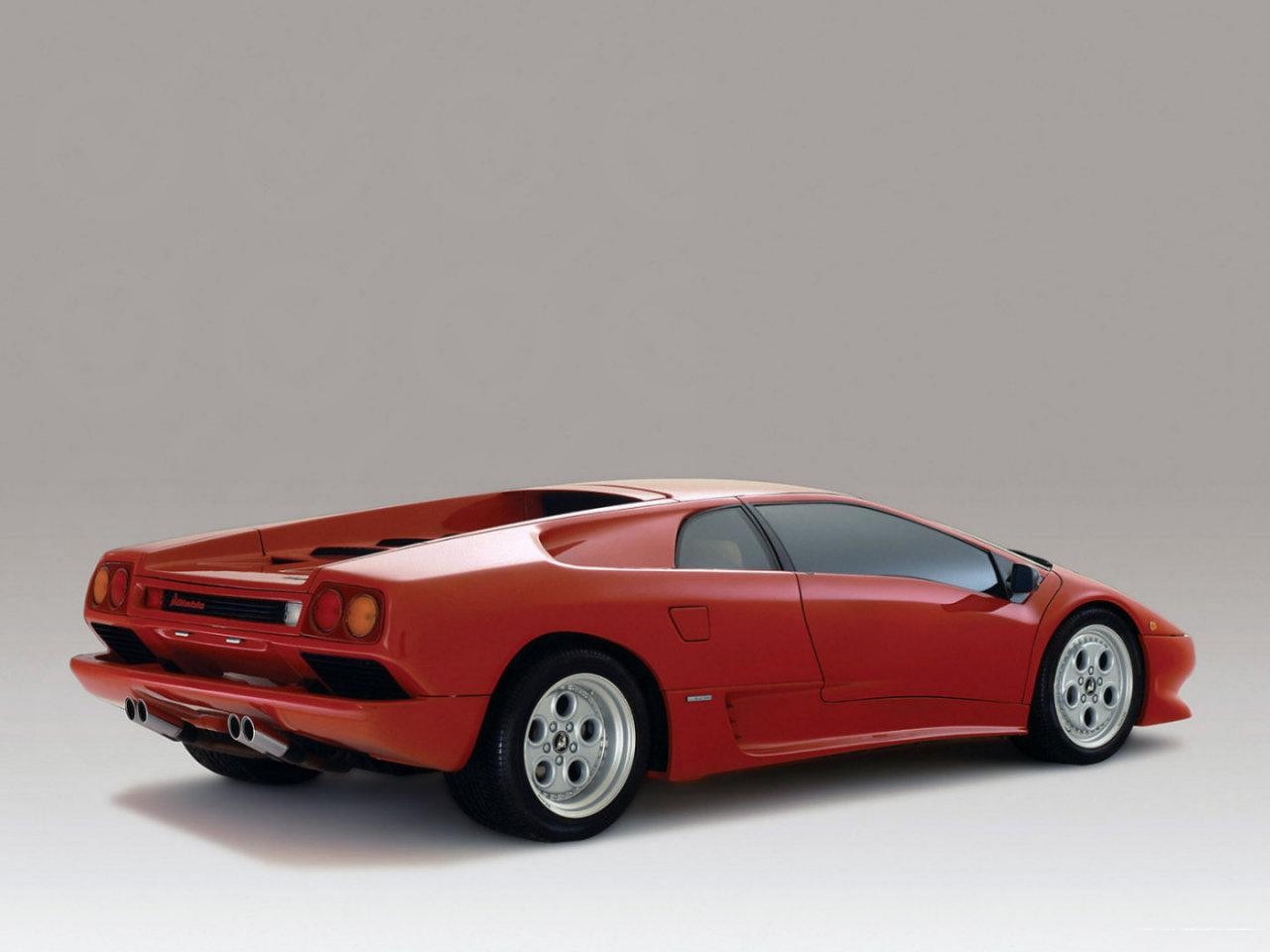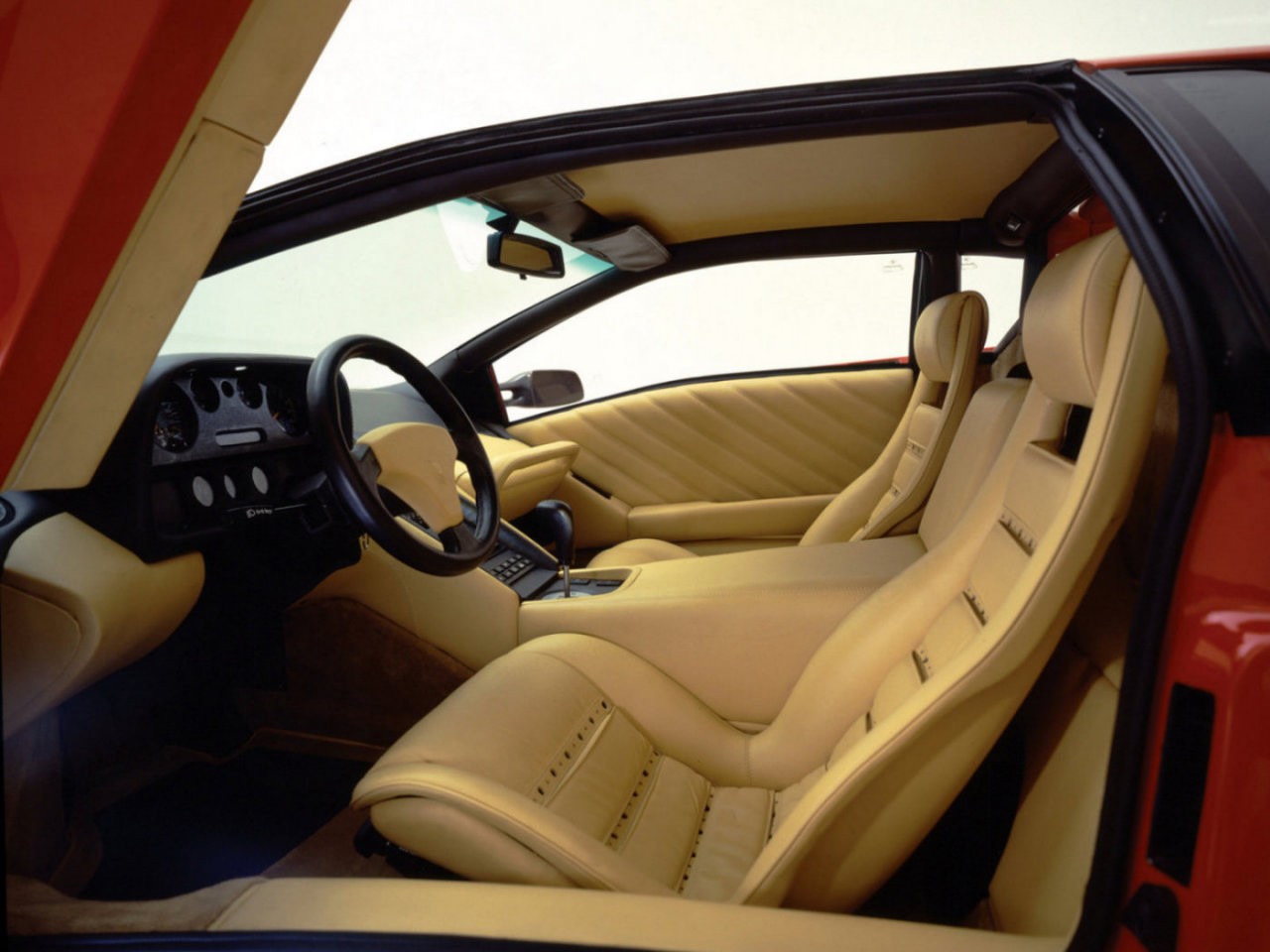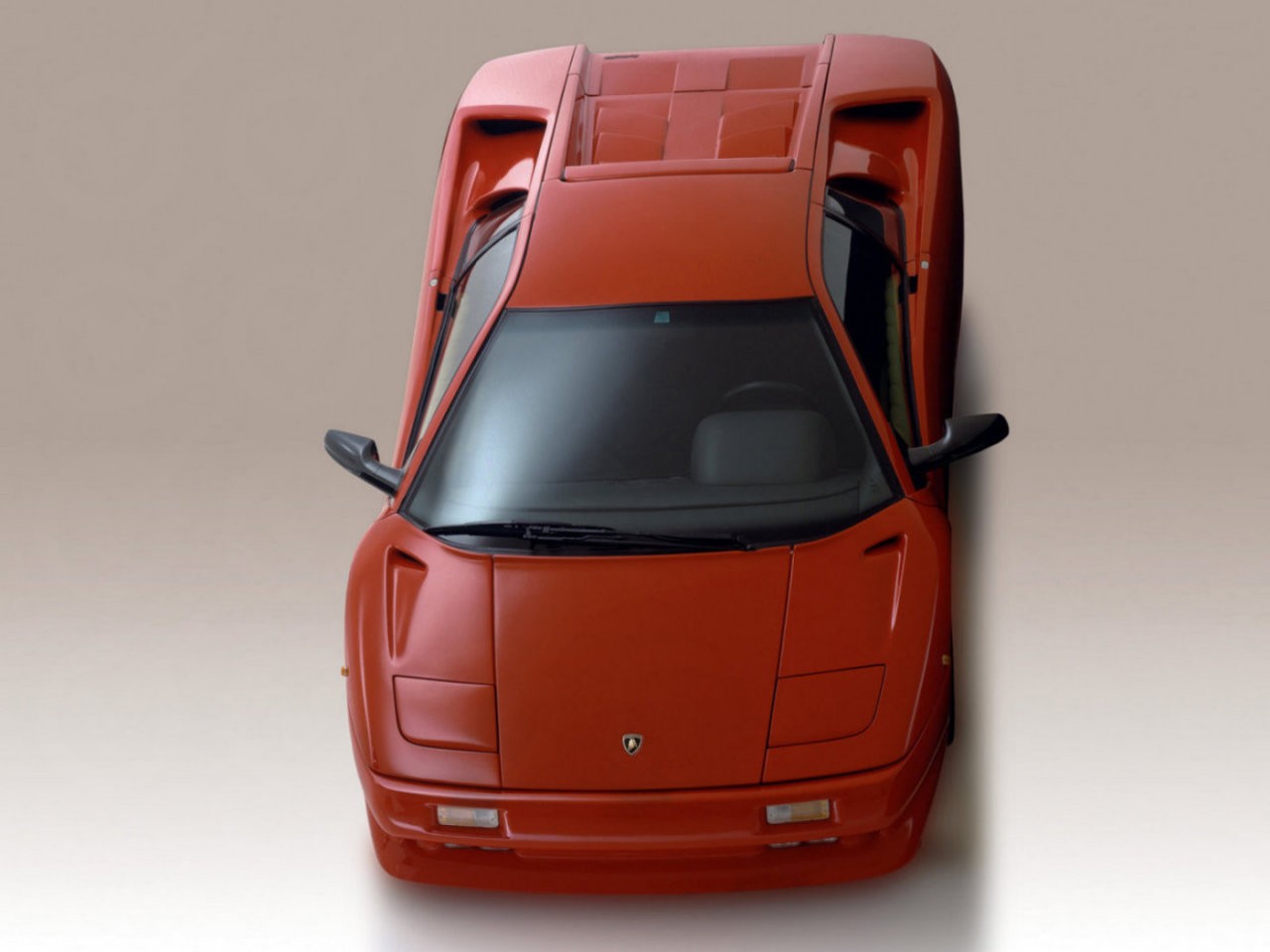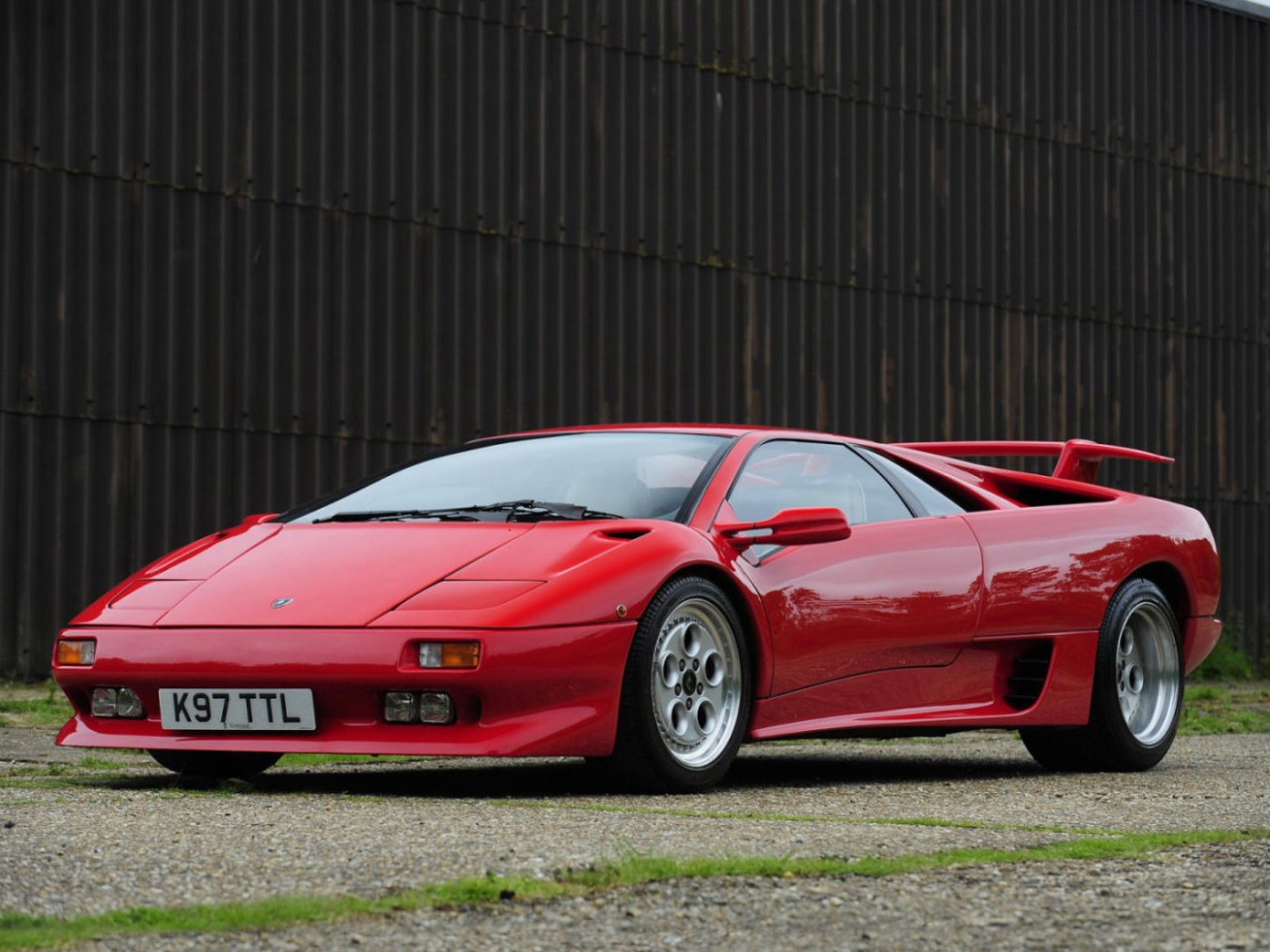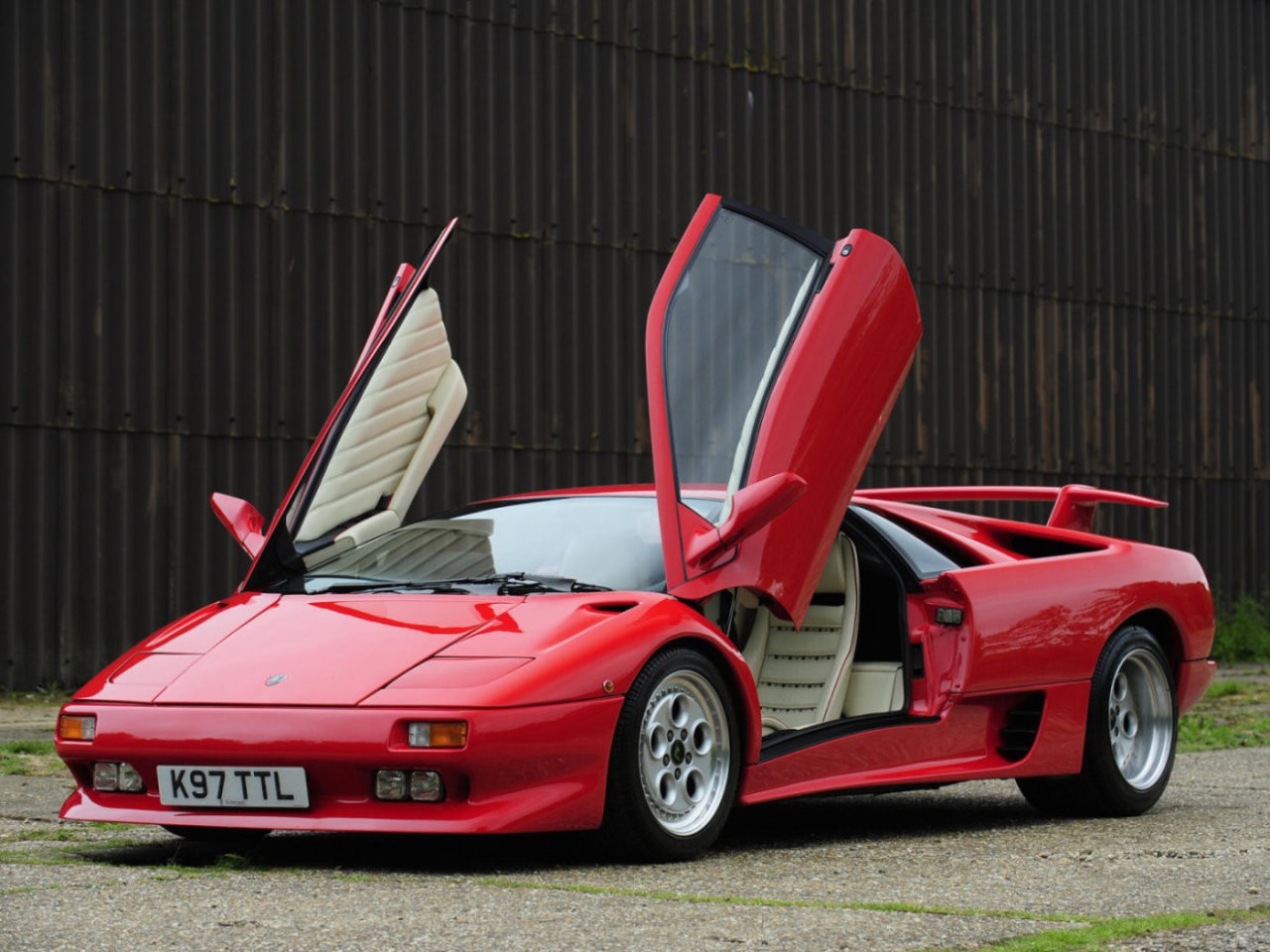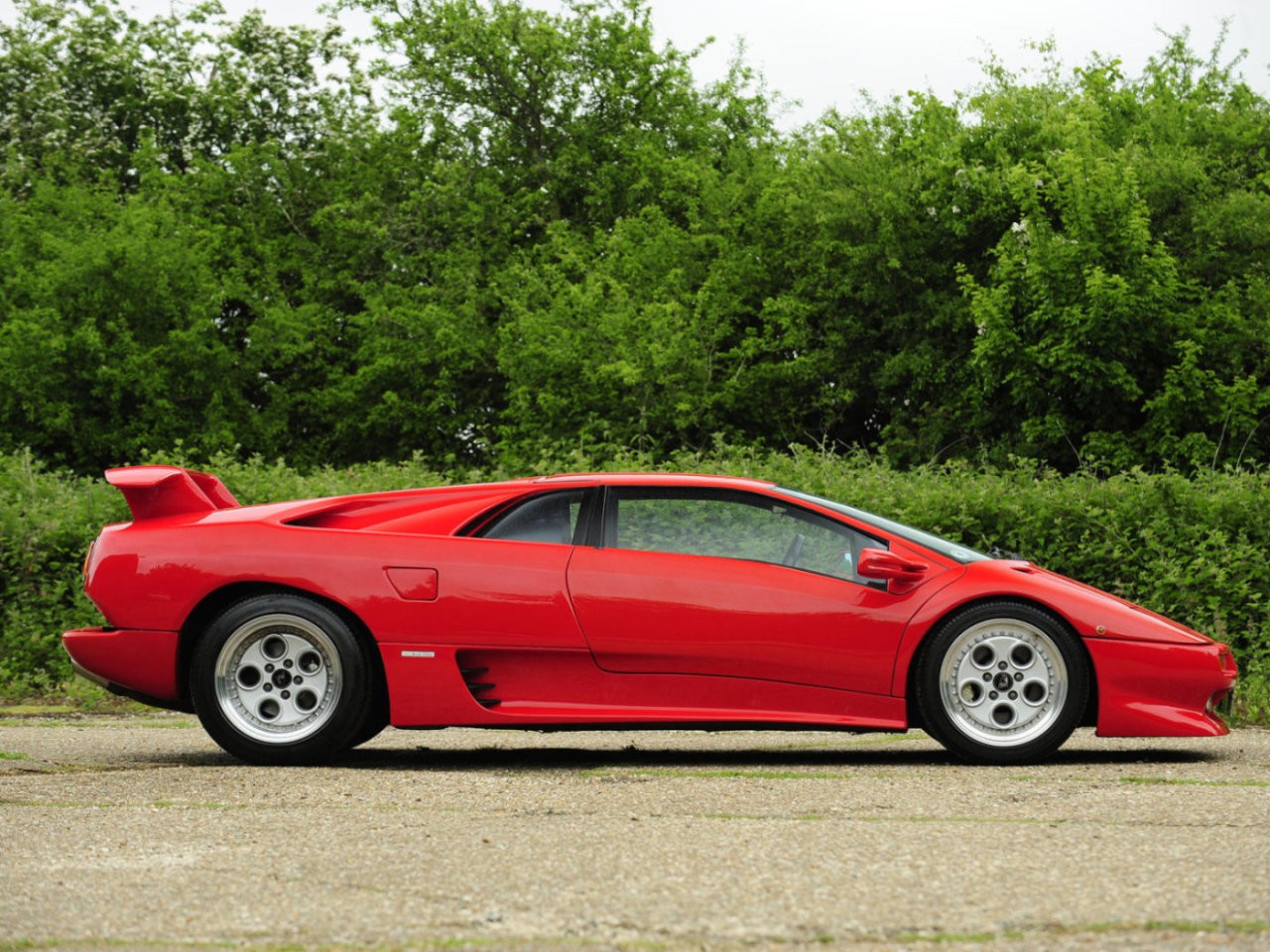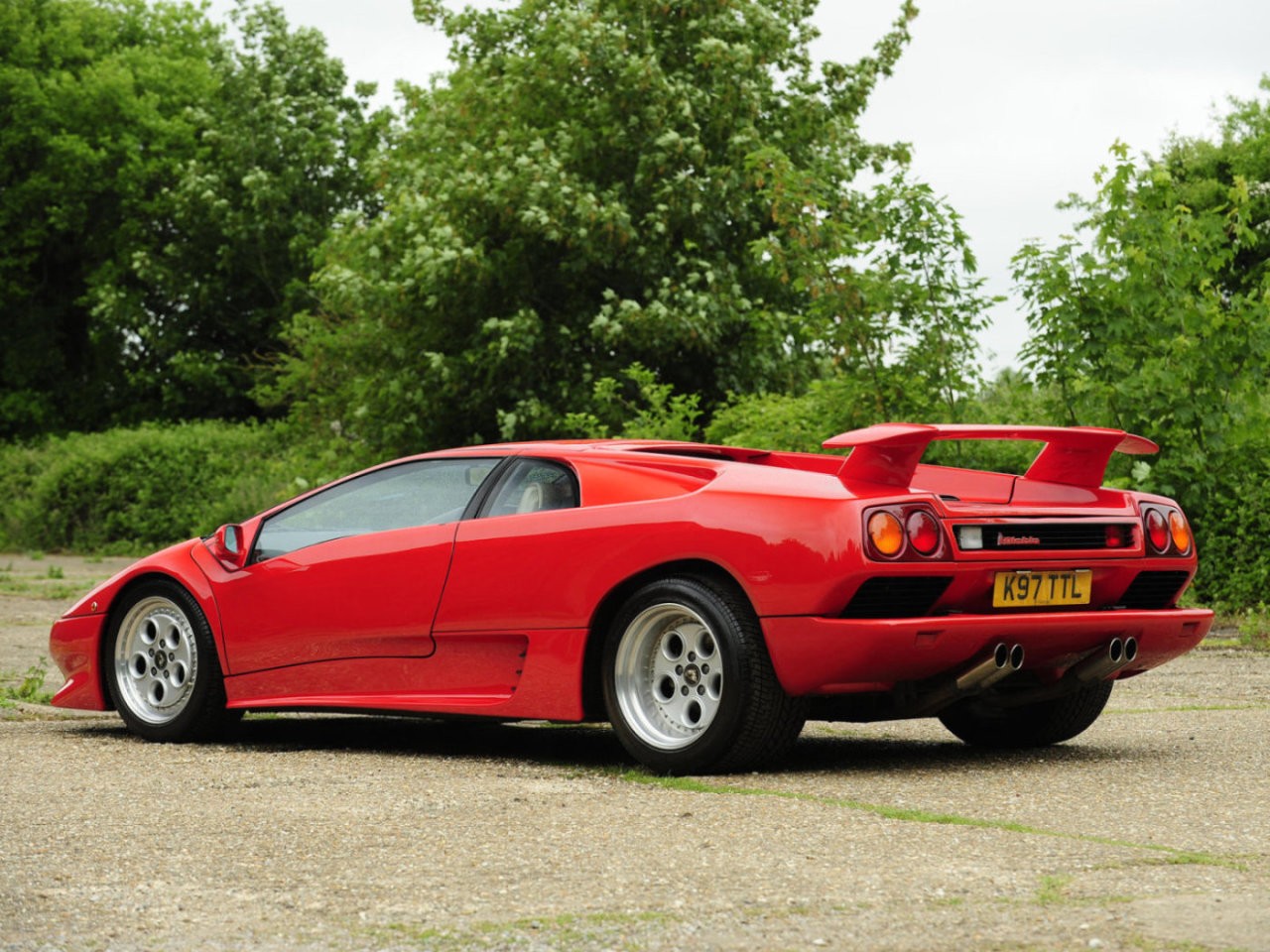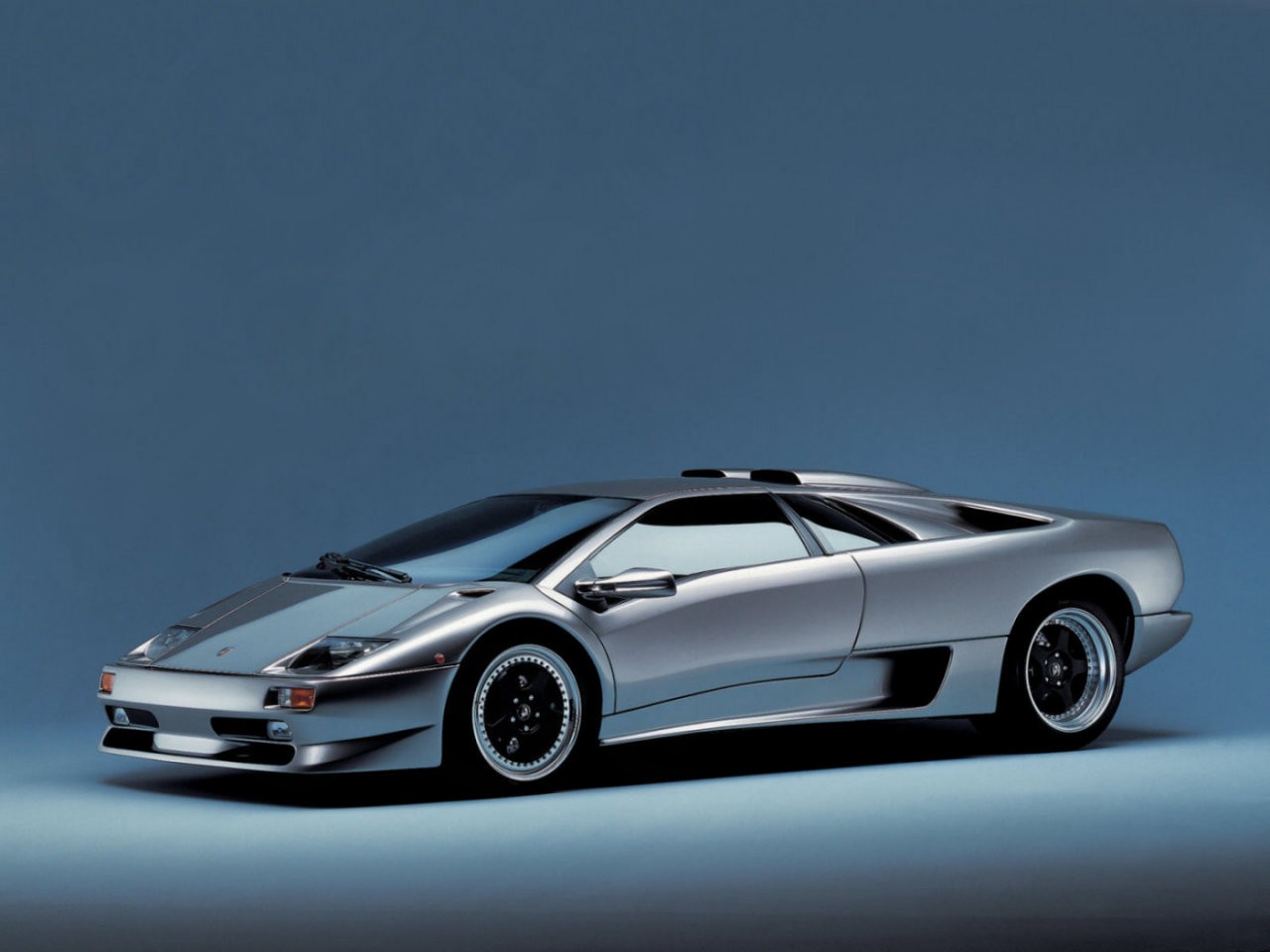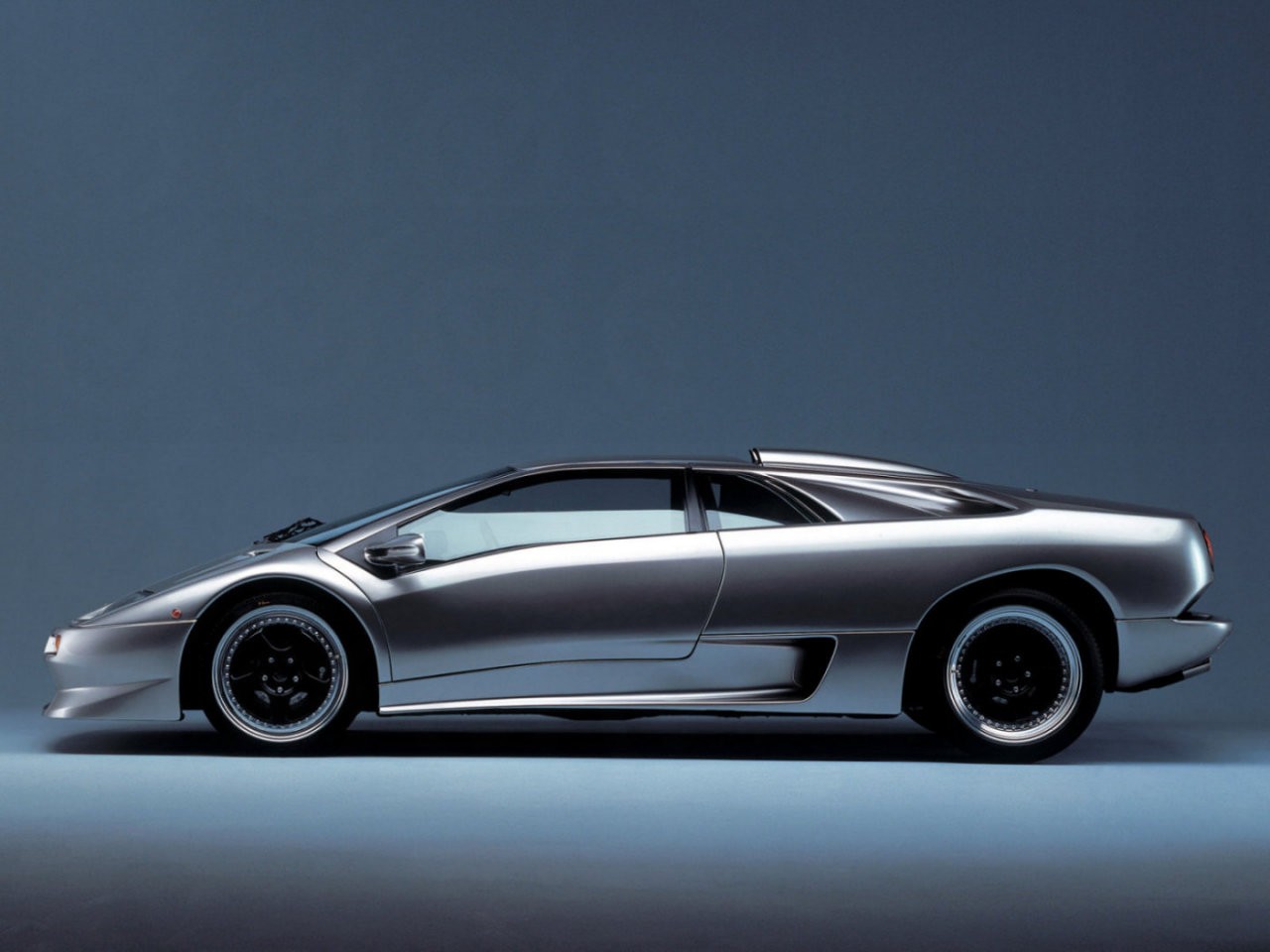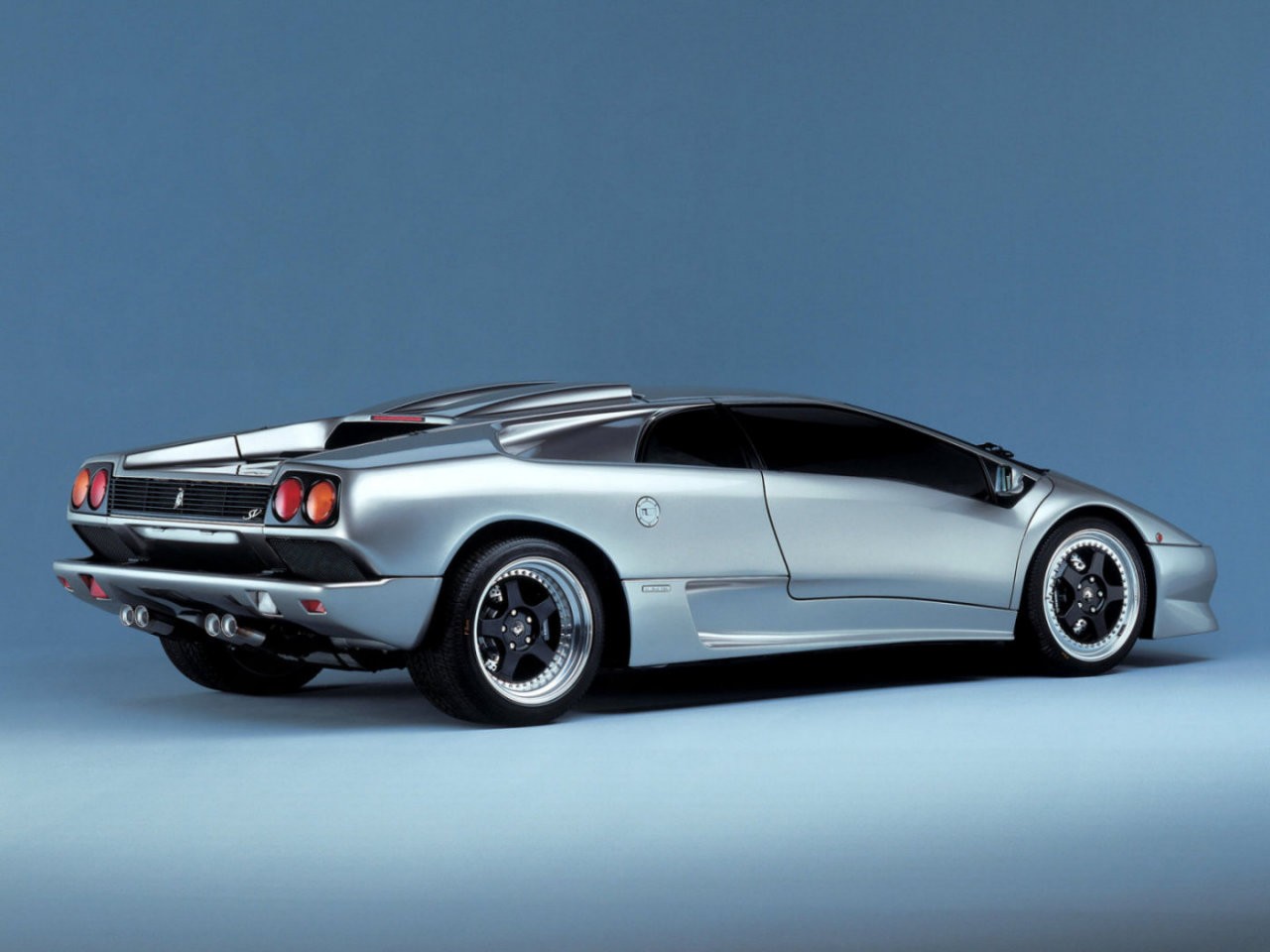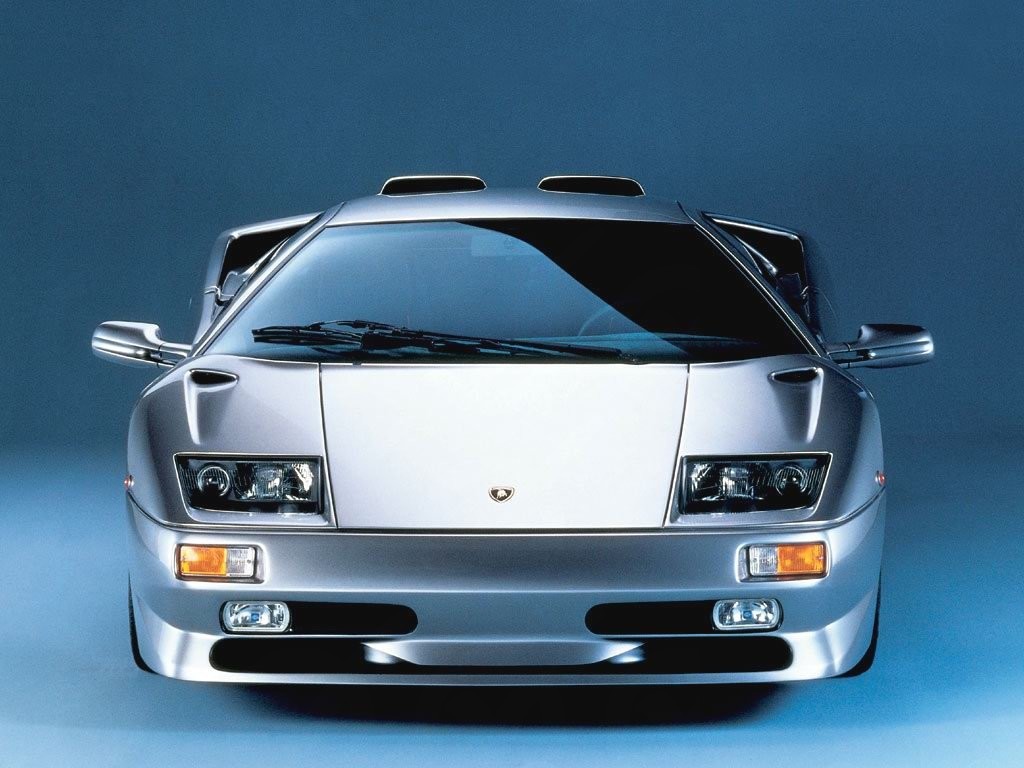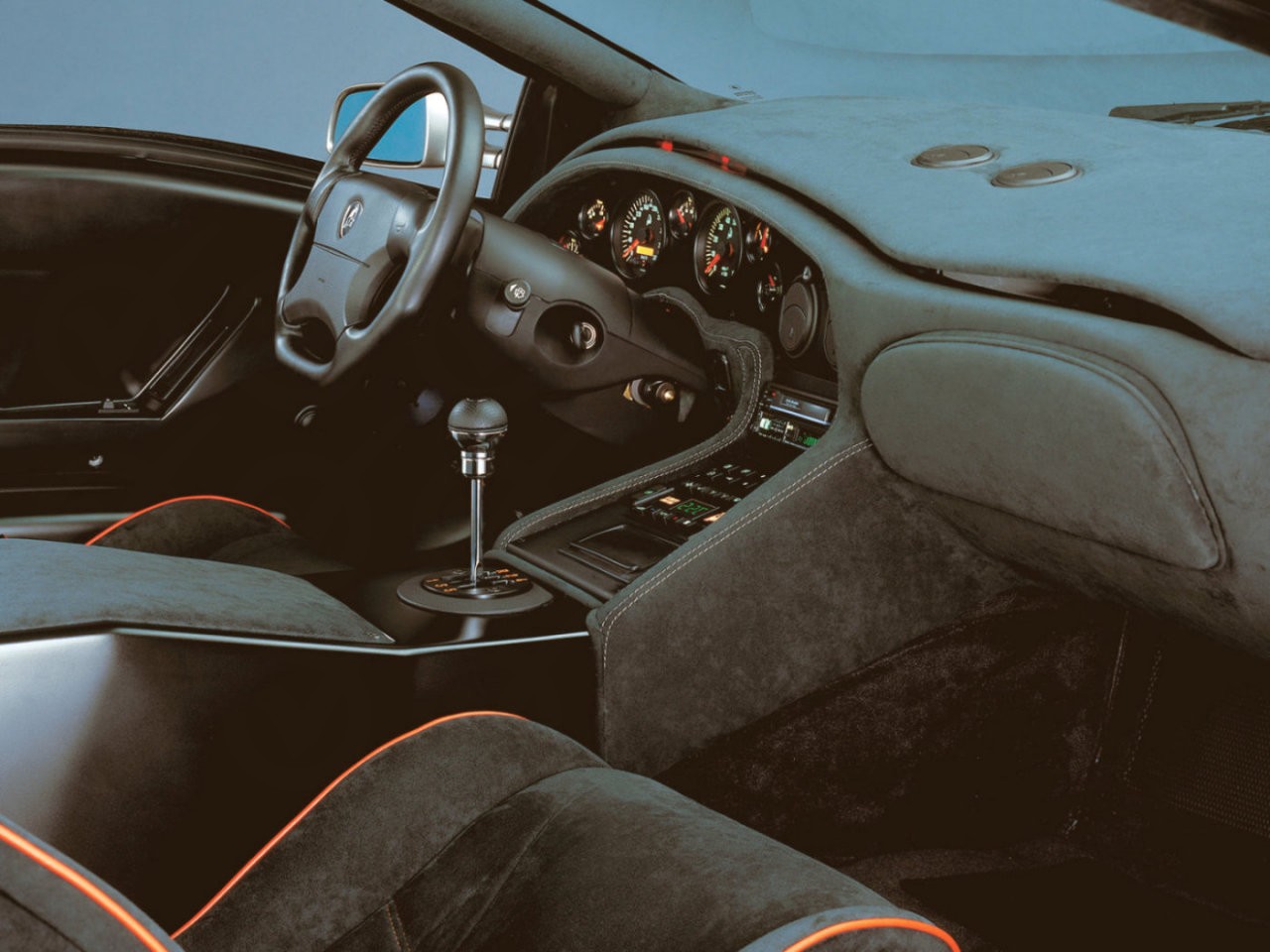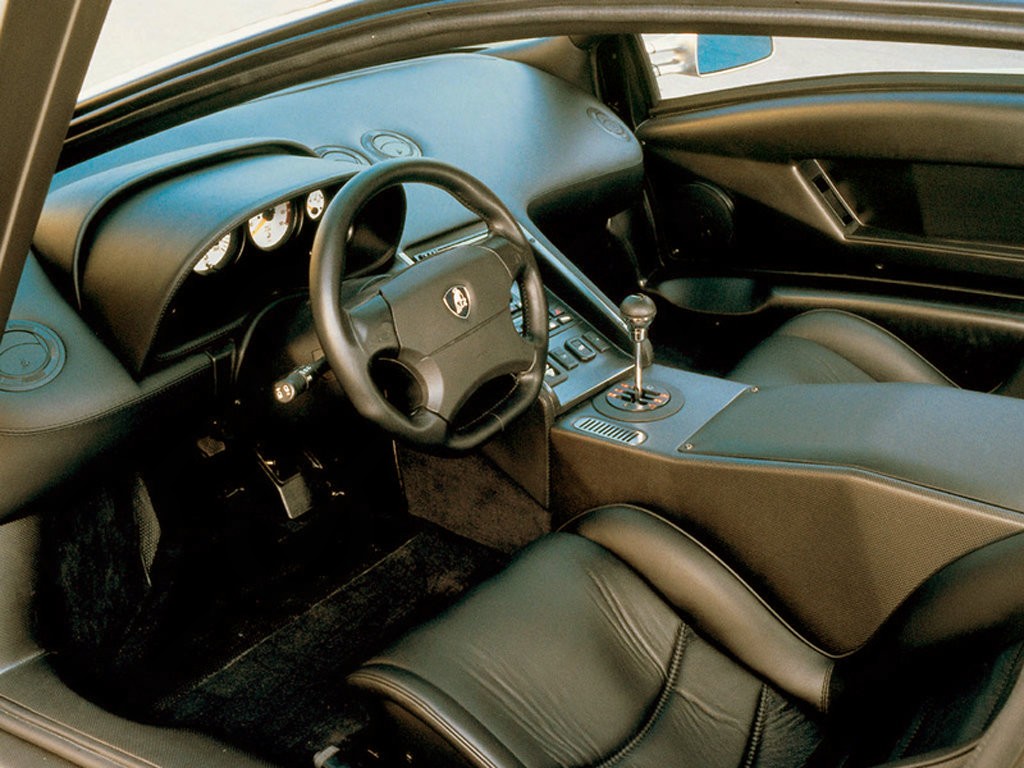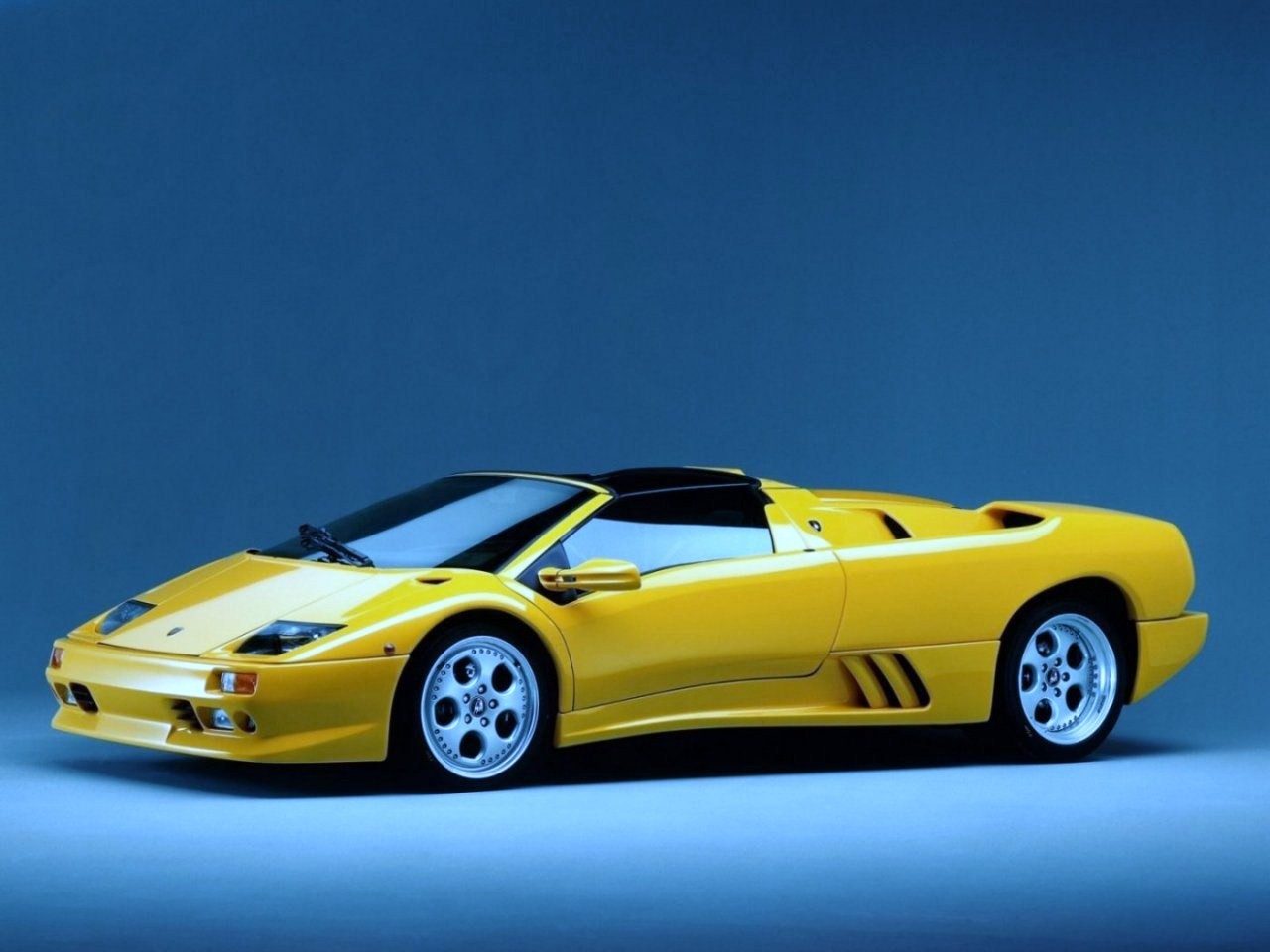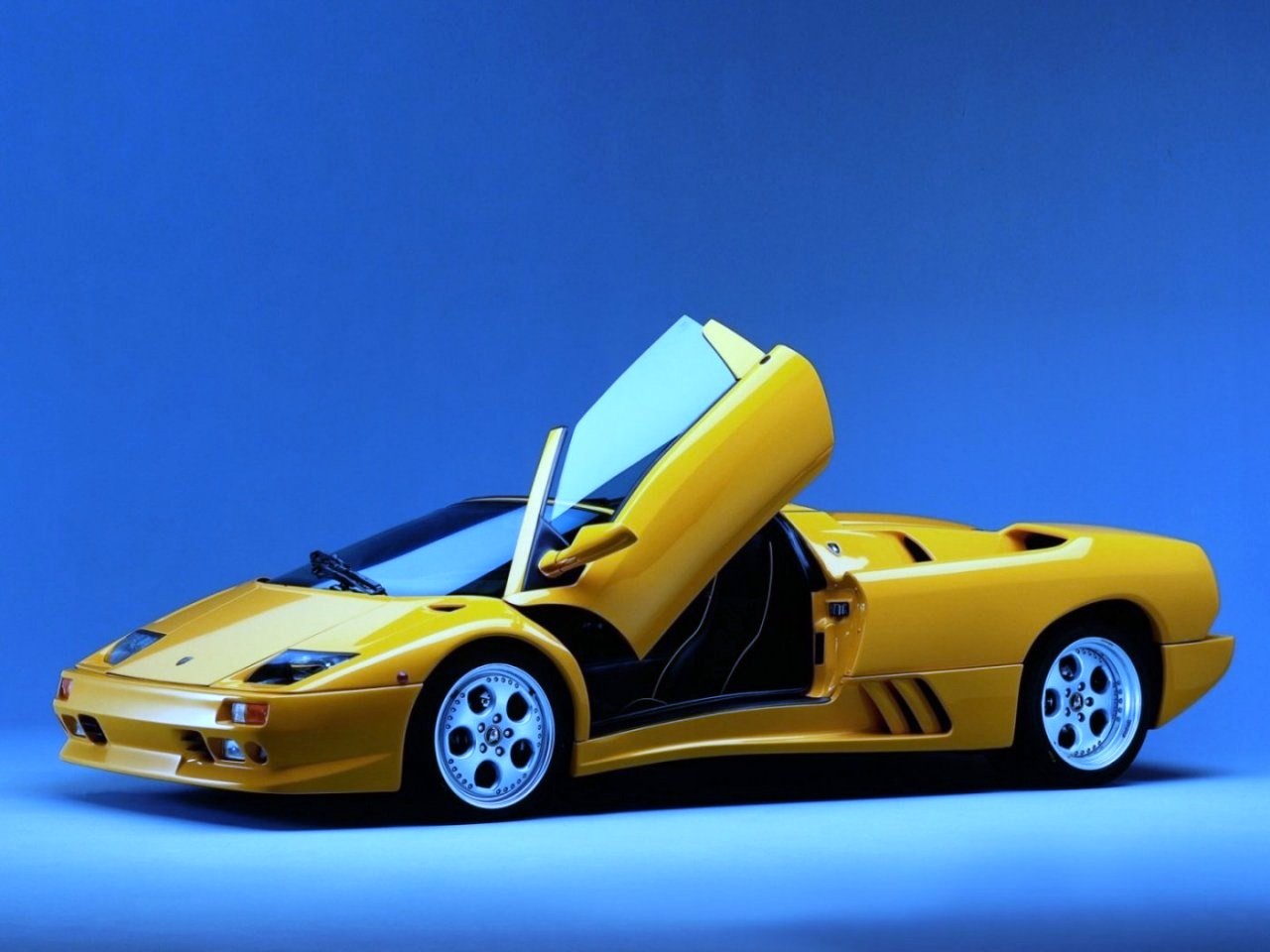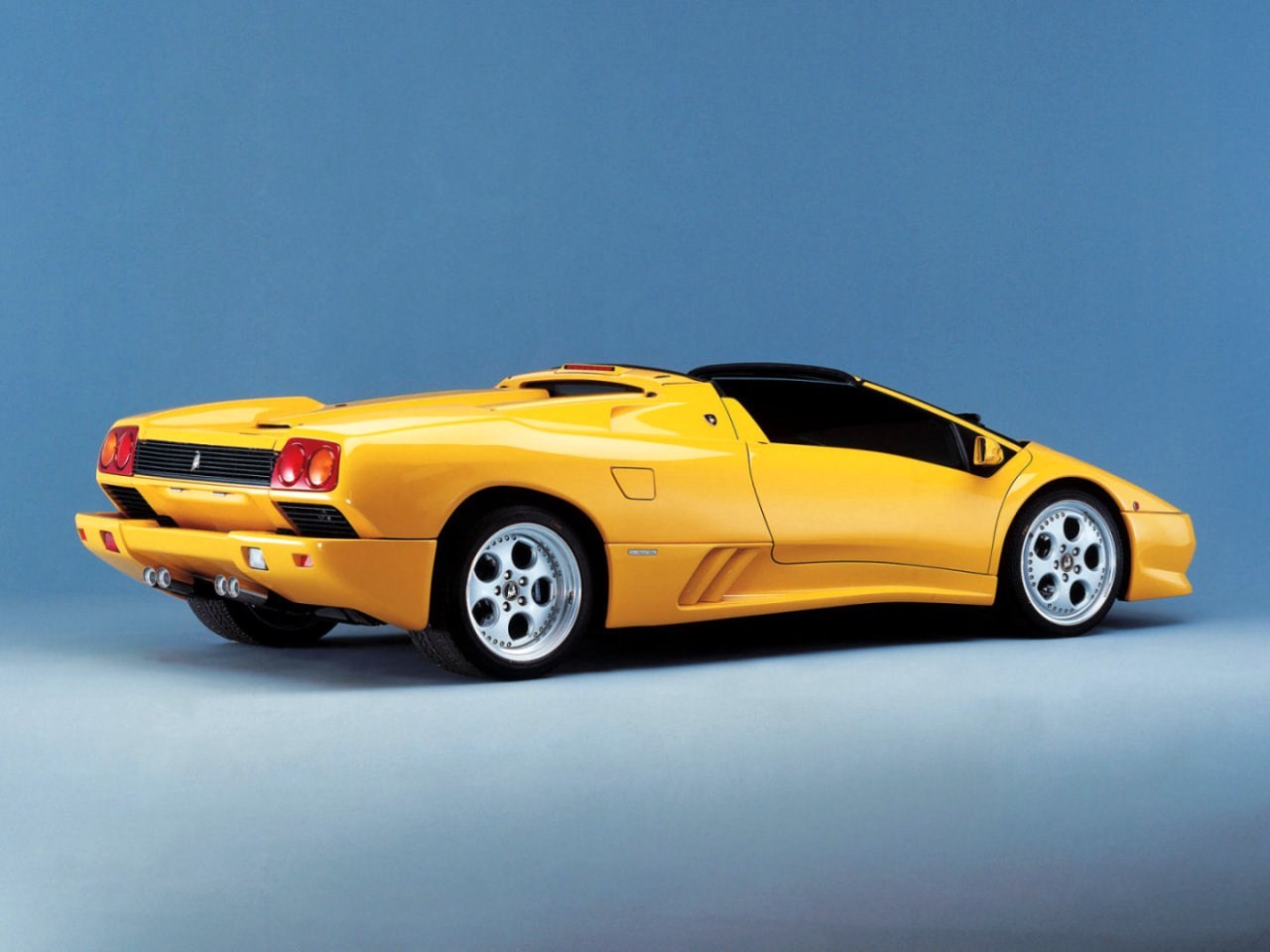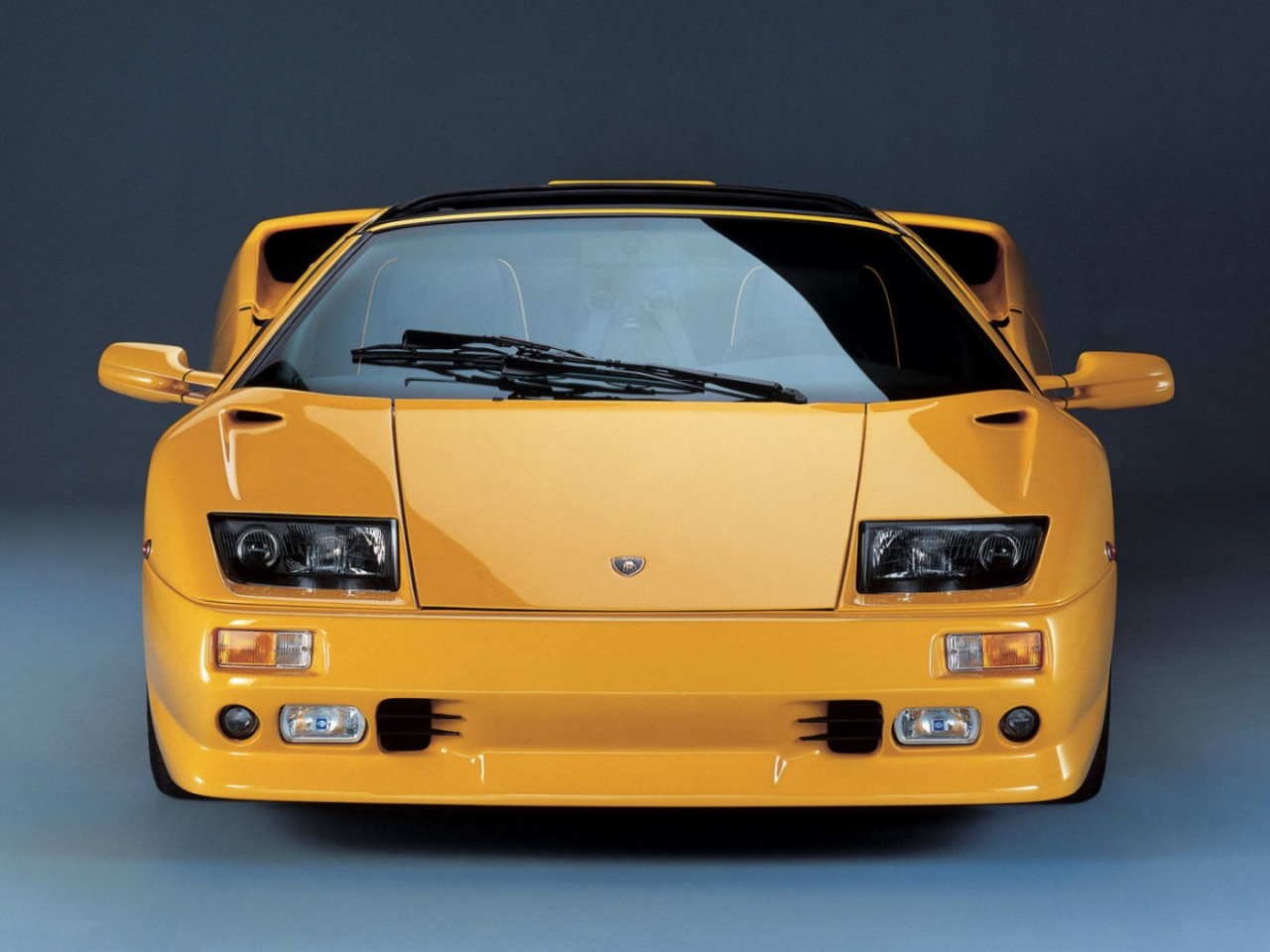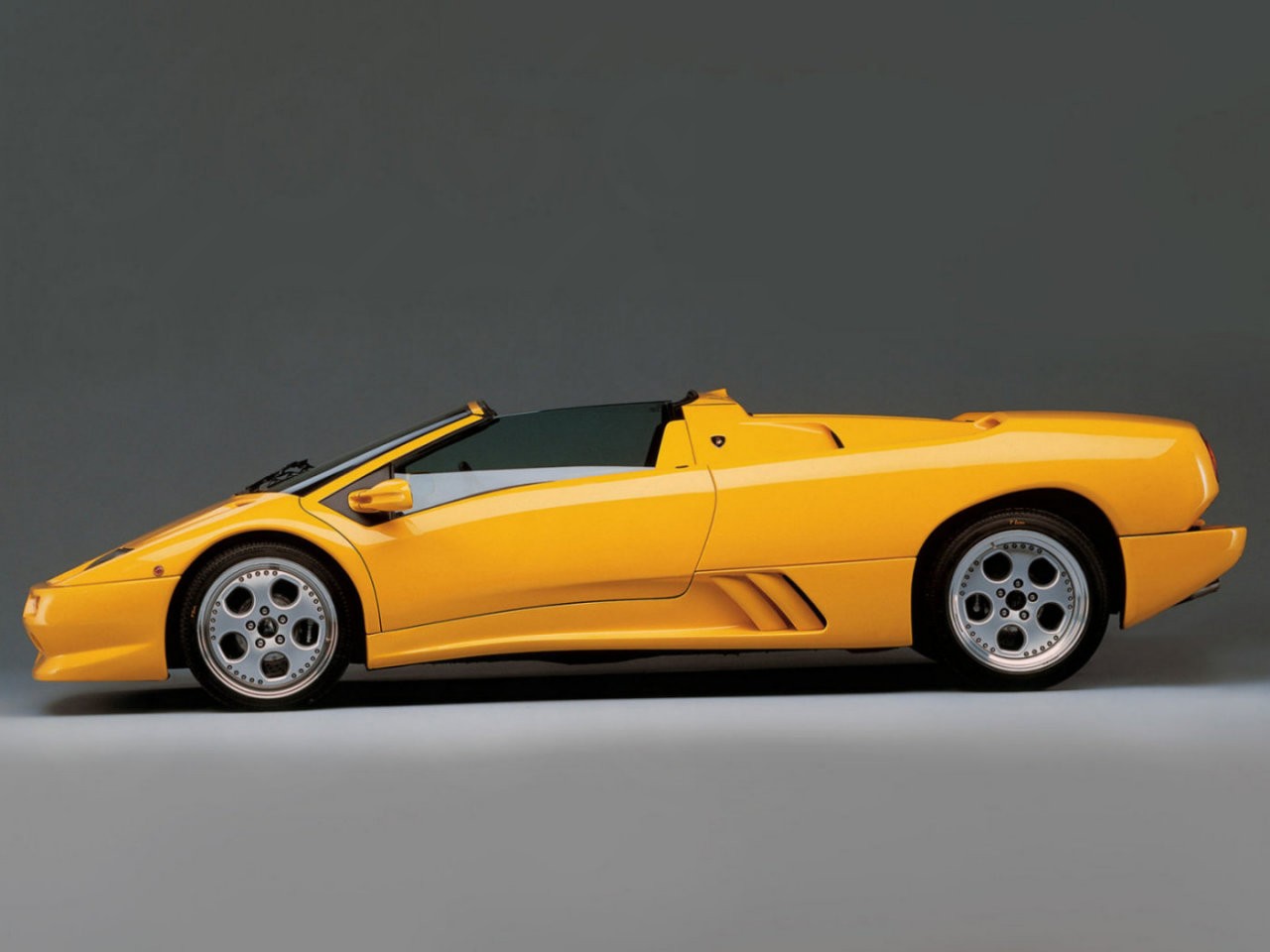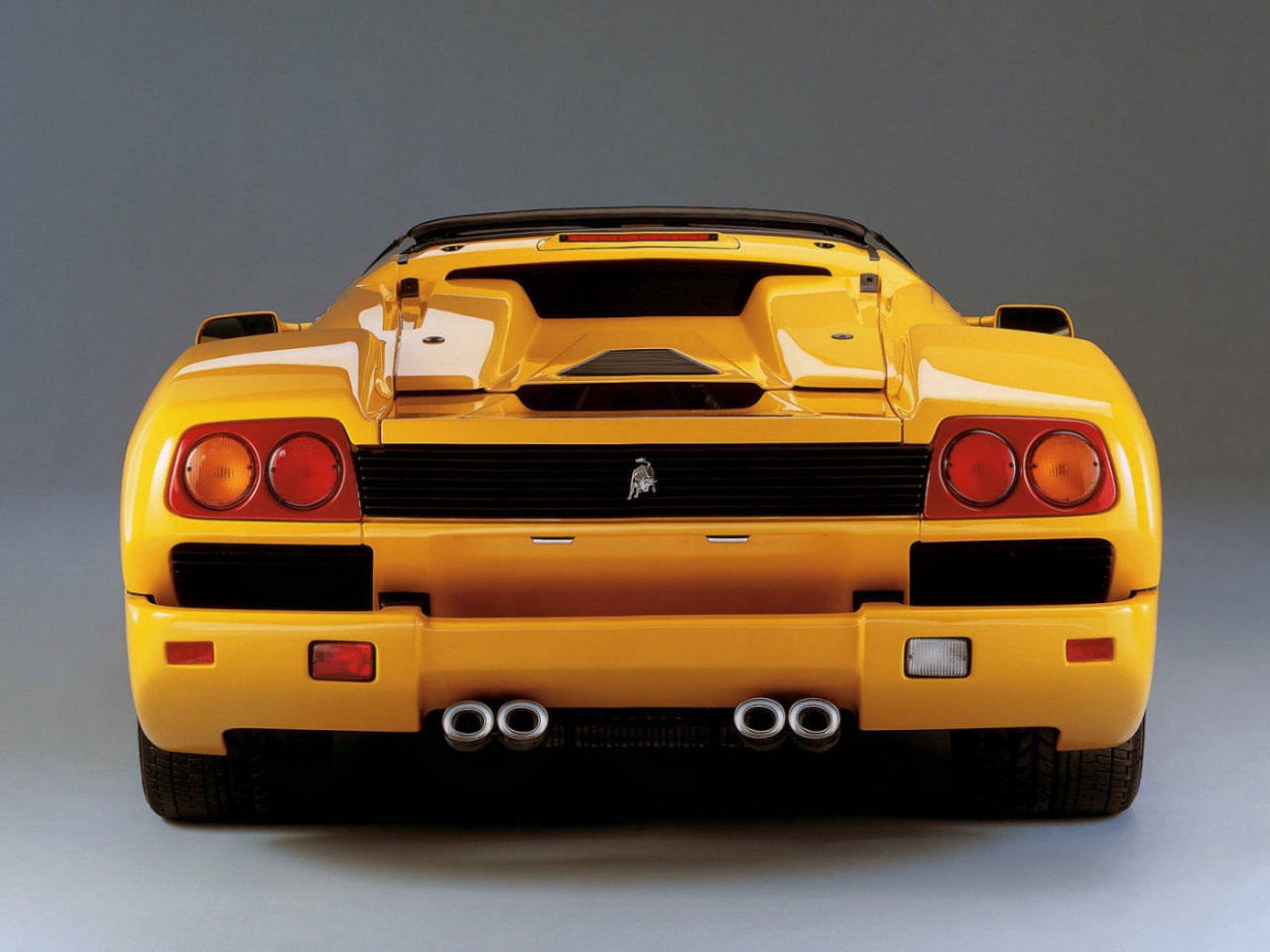
- Powerful, free-revving V12 engine
- Excellent dynamics
- ‘Viscous Traction’ (VT) all-wheel drive system improves traction
- Beautiful Gandini styling
- High running and maintenance costs
- Completely impractical
Review: Lamborghini L132.I Diablo (1991-98)
Overview
Released in September 1991, the Lamborghini L132 Series I (L132.I) Diablo was a two-seat supercar. The Diablo was powered by a mid-mounted 5.7-litre V12 engine – with double overhead camshafts – that was mated to a five-speed manual transmission.
Initially available as a rear-wheel drive coupe, all-wheel drive VT variants were released in 1994. Convertible models were available from 1996; these models were fitted with a power-operated carbon-fibre targa top which could be stored above the engine cover. The base Diablo was discontinued in 1995 and replaced by the more powerful SV (‘Super Veloce’) variant in 1996.
| Body | Variant | Years | Engine | Trans. | Peak power | Peak torque |
|---|---|---|---|---|---|---|
| Coupe | N/A | 1991-95 | 5.7-litre petrol V12 | 5sp man. | 362 kW at 7000 rpm | 580 Nm at 5500 rpm |
| VT | 1994-98 | |||||
| SV | 1996-98 | 5.7-litre petrol V12 | 5sp man. | 380 kW at 7000 rpm | 580 Nm at 5500 rpm | |
| Convertible | VT | 1996-98 | 5.7-litre petrol V12 | 5sp man. | 362 kW at 7000 rpm | 580 Nm at 5500 rpm |
All-wheel drive system
The VT (‘Viscous Traction’) variants were fitted with an all-wheel drive system which utilised a viscous centre differential. In normal conditions, torque was directed to the rear wheels, but up to 28 per cent of the engine’s torque could be redirected to the front wheels in the event that traction was lost. The VT was also fitted with limited slip front and rear differentials, with 25 and 45 per cent locking ratios respectively.
Safety equipment
The L132.I Diablo was not fitted with safety equipment such as airbags or ABS.
Features
Standard Diablo features included 17-inch alloy wheels, an Alpine sound system, climate control air conditioning, leather trim, power windows and adjustable front seats and steering wheel.
When the VT was introduced, it could be identified by its air intakes below the driving lamps (for improved brake cooling) and larger intakes in the rear arches. The VT was also fitted with electronically adjustable dampers and power steering, though these developments were subsequently incorporated into the standard Diablo.
Released in 1996, the SV (‘Super Veloce’) could be identified by its ducted engine lid, additional front brake cooling ducts, dual front fog lamps (rather than the quad style of previous models), adjustable rear spoiler, black tail lamp surrounds and repositioned tail-lights.
Review: Lamborghini L132.II Diablo (1998-01)
Overview
Released in August 1998, the L132 Series II (L132.II) Diablo was powered by a more powerful 5.7-litre V12 engine due to the introduction of variable valve timing. Visually, the L132.II Diablo could be identified by its fixed composite headlights (replacing the pop-up headlights) and 18-inch alloy wheels with larger disc brakes. Inside, there was a new wave-shaped dashboard which featured a thin strip of black glass across the length of the dashboard.
In March 2000, the 5.7-litre models were discontinued and replaced by a 6.0-litre V12 VT coupe.
| Body | Variant | Years | Engine | Trans. | Peak power | Peak torque |
|---|---|---|---|---|---|---|
| Coupe | SV | 1998-00 | 5.7-litre petrol V12 | 5sp man. | 390 kW at 7100 rpm | 605 Nm at 5500 rpm |
| VT | 1998-00 | 5.7-litre petrol V12 | 5sp man. | 390 kW at 7100 rpm | 605 Nm at 5500 rpm | |
| 2000-01 | 6.0-litre petrol V12 | 5sp man. | 405 kW at 7100 rpm | 620 Nm at 5500 rpm | ||
| Convertible | SV, VT |
1998-00 | 5.7-litre petrol V12 | 5sp man. | 390 kW at 7100 rpm | 605 Nm at 5500 rpm |
Safety equipment
Standard safety equipment for the L132.II Diablo included dual front airbags and ABS.
Diablo VT: 6.0-litre V12
Released in March 2000, the 6.0-litre V12 Diablo VT was fitted with a longer stroke version of the previous 5.7-litre V12 engine. The 6.0-litre unit, however, was accompanied by a new ECU, intake and exhaust systems and revised variable valve timing. Furthermore, the front and rear tracks were widened, the entire body – except for the doors – was made of carbon-fibre and the chassis was reinforced with carbon-fibre inserts.
Visually, the 6.0-litre V12 VT could be identified by its revised front fascia with two large air intakes, larger and repositioned indicator lenses and body-coloured tail-light surrounds. The interior was also updated and featured new climate control system.
Related links
